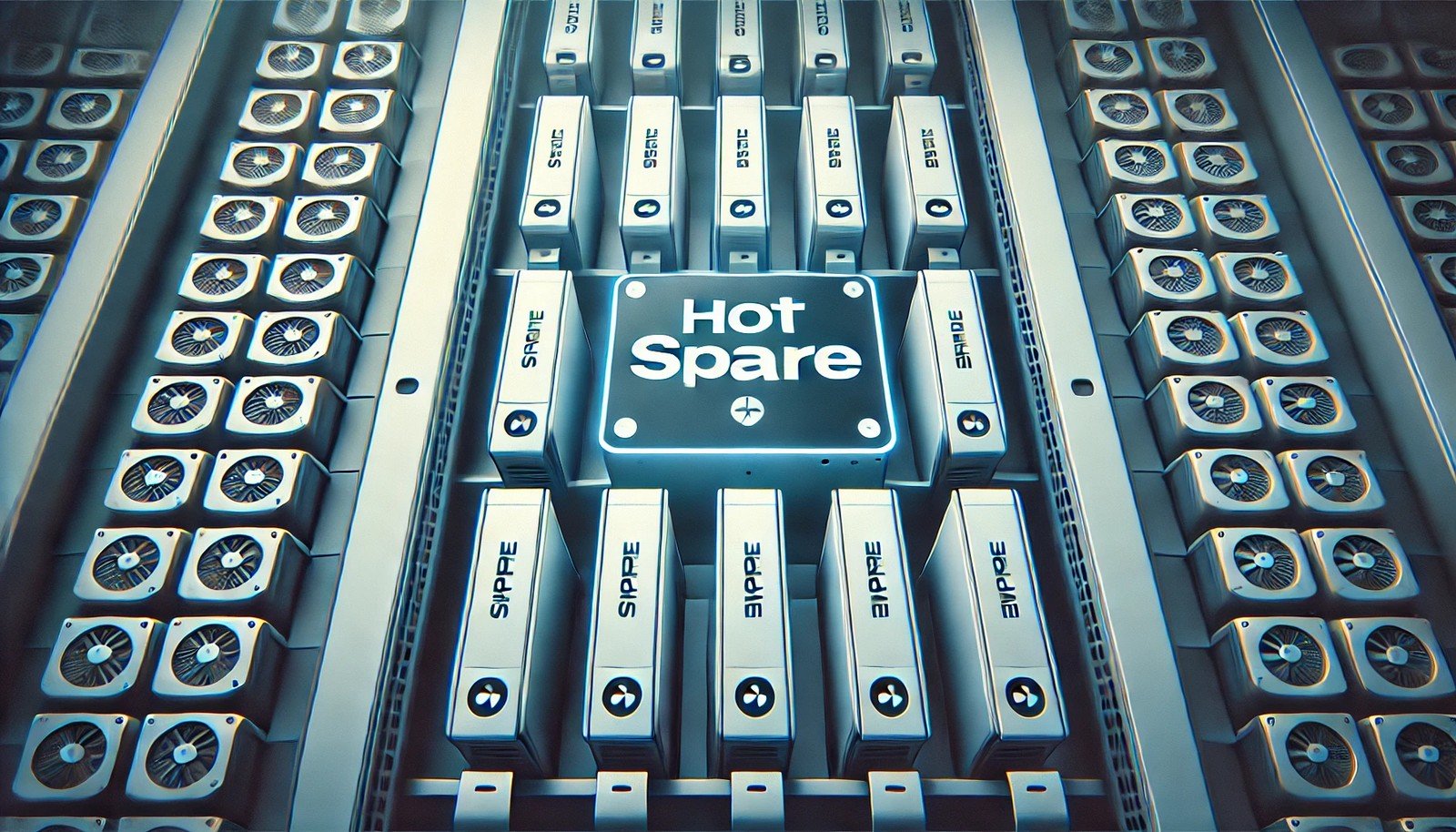Hot Spare
 (Representational Image | Source: Dall-E)
(Representational Image | Source: Dall-E)
Quick Navigation:
- Hot Spare Definition
- Hot Spare Explained Easy
- Hot Spare Origin
- Hot Spare Etymology
- Hot Spare Usage Trends
- Hot Spare Usage
- Hot Spare Examples in Context
- Hot Spare FAQ
- Hot Spare Related Words
Hot Spare Definition
A hot spare is a backup hardware component, typically a hard drive or server, that remains powered on and available in a system but is not actively in use. In the event of a primary component failure, the system automatically switches to the hot spare to maintain operations with minimal downtime.
Hot Spare Explained Easy
Imagine you have a bicycle with two tires, and you keep an extra tire ready just in case one of your tires gets punctured. But instead of carrying it around, the spare tire is already attached and ready to be used instantly if needed.
Hot Spare Origin
The concept of hot spares emerged alongside the development of fault-tolerant computing and RAID storage solutions in the late 20th century.
Hot Spare Etymology
The term hot spare combines:
- “Hot”: referring to a component that remains powered on and available.
- “Spare”: indicating that it is a backup, ready to replace a failed component instantly.
Hot Spare Usage Trends
The use of hot spares has grown with the rise of cloud computing, data centers, and enterprise storage solutions. Organizations prioritize hot spares for mission-critical applications where downtime is costly.
Hot Spare Usage
- Formal/Technical Tagging:
- Hardware Redundancy
- Fault Tolerance
- RAID Systems - Typical Collocations:
- "hot spare drive"
- "RAID hot spare configuration"
- "automatic hot spare replacement"
Hot Spare Examples in Context
- The IT team configured a hot spare drive in the RAID array to ensure uninterrupted access to data.
- Cloud storage providers implement hot spare policies to maintain service availability.
Hot Spare FAQ
- What is a hot spare?
A hot spare is a backup hardware component that remains on standby and automatically replaces a failed component in a system. - Where are hot spares commonly used?
Hot spares are widely used in RAID storage, enterprise servers, and cloud infrastructure. - How does a hot spare work in RAID?
In RAID configurations, a hot spare automatically takes over when an active drive fails. - Is a hot spare the same as a cold spare?
No, a hot spare is powered on and ready for immediate use, while a cold spare requires manual intervention. - What are the benefits of using a hot spare?
Hot spares minimize downtime, enhance system reliability, and ensure smooth failover.
Hot Spare Related Words
- Categories/Topics:
- Data Redundancy
- Server Reliability
- RAID Storage
Did you know?
In high-availability data centers, hot spares are not limited to just hard drives—some systems even use hot spare power supplies and network switches to keep operations running without interruptions.
PicDictionary.com is an online dictionary in pictures. If you have questions or suggestions, please reach out to us on WhatsApp or Twitter.Authors | Arjun Vishnu | @ArjunAndVishnu

I am Vishnu. I like AI, Linux, Single Board Computers, and Cloud Computing. I create the web & video content, and I also write for popular websites.
My younger brother, Arjun handles image & video editing. Together, we run a YouTube Channel that's focused on reviewing gadgets and explaining technology.



Comments powered by CComment